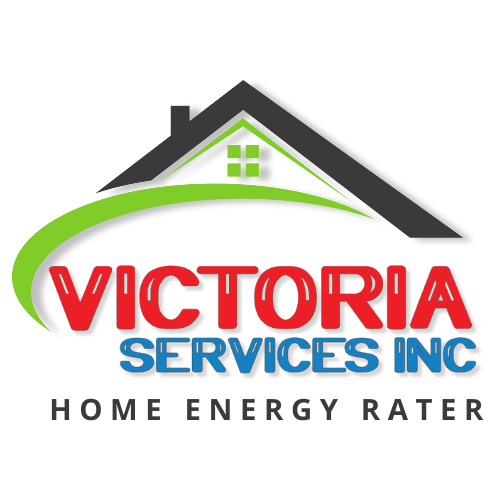Air Conditioner
Central air conditioning is commonly used for residential and commercial applications where a centralized system is more efficient and practical than individual room-based solutions. It allows for consistent temperature control providing comfort throughout the entire space.
What is a Central Air HVAC System?

Experience Seamless Comfort
With Consistent Temperature Across Every Room
How To Enhance AC Energy Efficiency
Insulating Existing Ductwork
To further optimize your central air system without the need for a new unit, consider insulating your ductwork. Adequate insulation ensures that cooled or heated air remains within the ducts, preventing unnecessary energy loss. It's also crucial to assess the overall insulation of your home, sealing gaps and cracks in doors and windows to minimize air leaks. When focusing on your air ducts, a thorough inspection is essential to identify and seal any leaks, preventing the loss of conditioned air. Additionally, ensure proper insulation, especially in unconditioned spaces such as attics, to maintain the efficiency of your central air system. By addressing these specific details, you can significantly contribute to both the energy efficiency of your home and the broader environmental goals set by Massachusetts.
Air Conditioner
Installation: Requires ductwork installation throughout the entire property.
Zoning and Control: Generally cools the entire house uniformly, with limited zone control.
Energy Efficiency: Efficiency can be affected by ductwork issues, such as leaks and poor insulation.
Flexibility: Typically requires more space for ductwork, limiting installation options.
Cost: Initial installation costs can be higher due to ductwork requirements.
Ductless
Installation: Does not require ductwork, leading to less invasive installation and flexibility in placement.
Zoning and Control: Offers individual temperature control for specific zones or rooms, allowing personalized comfort settings.
Energy Efficiency: Tends to be more energy-efficient due to the absence of ducts and precise zone cooling, potentially leading to lower utility bills.
Flexibility: Offers flexibility in installation due to its compact size and lack of ductwork, suitable for both new constructions and retrofits.
Cost: Initial costs might be higher per unit but can be more cost-effective in the long run due to energy savings and installation simplicity.
Ductless VS Air Conditioner
Why Upgrade Your System

Professional On-Site Assessment
Our experienced HVAC professionals conduct a detailed on-site assessment of your home, evaluating its size, layout, and individual room characteristics.
Accurate Square Footage Measurement
We measure the square footage of each area requiring air conditioning, ensuring precise calculations for the total cooling load.
Insulation and Energy Efficiency Analysis
We assess the insulation levels in your home to gauge its energy efficiency, considering how well the building retains conditioned air.
Sunlight Exposure and Climate Considerations
Taking into account the orientation of your home and local climate conditions, we factor in sunlight exposure to determine the appropriate cooling capacity.
Manual J Load Calculation
Our professionals perform a Manual J load calculation, an industry-standard method that considers insulation, window size, climate, and more, providing an accurate estimation of your home's cooling needs.
Customized Recommendations and Client Consultation
We provide personalized recommendations based on our findings and maintain open communication with you throughout the process. Your preferences, lifestyle, and budget are considered to tailor our suggestions to your specific needs.
AC Install
How We Determine Size & Capacity For Your Needs
Regular Filter Replacement:
Typically every 1-3 months or as recommended by the manufacturer. Clean filters ensure proper airflow, improve indoor air quality, and prevent the system from overworking.
1
Annual inspection and maintenance service:
This comprehensive check includes examining components, checking refrigerant levels, cleaning coils, and addressing any potential issues.
2
Ductwork Inspection and Sealing:
Regularly inspecting ductwork for leaks, damage, or blockages. Sealing any gaps or cracks to prevent conditioned air from escaping, ensuring that the system operates efficiently.
3
Outdoor Unit Maintenance:
Keeping the outdoor unit clean by trimming vegetation around the unit to maintain proper airflow and ensuring that the unit is not blocked by leaves, branches, or other debris.
4
What's The Maintenance Needed?
Annual Maintenance
FAQ
The Answers You Need
On average, new high efficiency air conditioning systems that are well-maintained can last between 15 to 20 years.
What is the average life of a central air system?
A central air conditioner comprises three main components: an outdoor compressor that circulates refrigerant, an indoor coil that extracts heat and moisture, and ductwork which distributes cooled air throughout your home.
How Does a Central Air System Work?
In many cases, it is recommended to replace both the outdoor and indoor units when upgrading or replacing components of your central air conditioning system. The outdoor unit (the condenser) and indoor unit (the air handler or furnace) work together as a matched system. Replacing only one unit may lead to compatibility issues and can compromise the overall efficiency and performance of the system.
